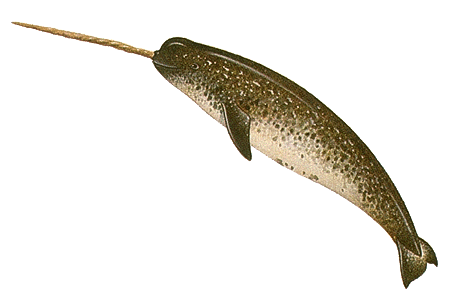Tracking the Unicorns of the Sea
Thursday, November 3rd, 2011Nov. 3, 2011
Seven high-tech narwhals are helping an international group of researchers in northern Canada learn more about the habits of this Arctic whale known for its unusual spiral tusk. In August, the researchers painlessly attached satellite radios with transmitters to nine narwhals (pronounced NAHR hwuhl). (Two of the transmitters apparently either malfunctioned or fell off.) About two-thirds of the world’s estimated 50,000 to 80,000 narwhals spend the summer north of Baffin Island, off the coast of the Canadian territory of Nunavut. This month, the radios are allowing the researchers to track the narwhals as they move south to avoid being trapped by winter sea ice.

A male narwhal has a long, spiral tusk growing forward from its upper jaw. World Book illustration by Colin Newman, Linden Artists Ltd.
The narwhal’s ivory tusk, which can grow to 10 feet (3 meters) long, is actually its left tooth. Males have at least one tusk, though some develop two. In females, the teeth grow only about 1 foot (0.3 meter) long, the length of most males’ right tooth. Most scientists think the tusk plays a role in selecting mates. Research also indicates that the tusk is a sensory organ. It may detect water temperature, pressure, and other sensations. Tiny tubes connect millions of nerve endings inside the tusk to the water outside.
The transmitters on the narwhals beam location information to an artificial satellite when the narwhal comes to the surface to breathe. The signals also relay how far below the surface the narwhal dived and how long it stayed underwater. The researchers hope this information will help them learn how narwhals are adjusting to a loss of sea ice in the Arctic linked to global warming. The research team, which is being funded by the conservation organization WWF-Canada, includes members of the Inuit community in Nunavut. The Inuit have traditionally hunted the narwhal.
Additional World Book articles:


